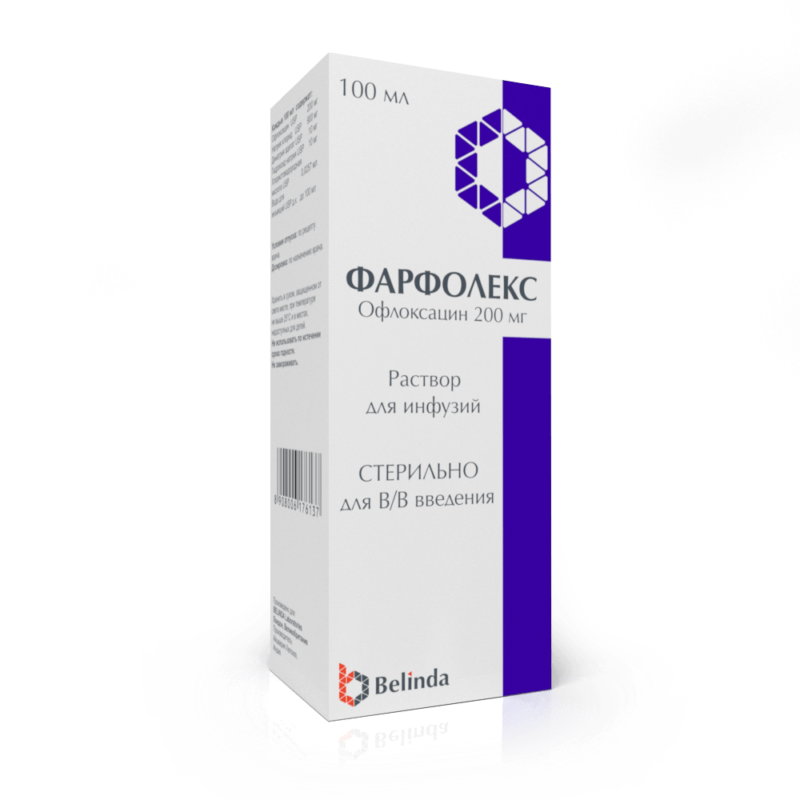
Farfoleks
PRESCRIPTION
It has a bactericidal effect, inhibiting the vital enzyme of the microbial cell – DNA gyrase, thereby disrupting the biosynthesis of DNA of microorganisms.
Manual
every 100 ml contains:
- Ofloxacin USP 200 mg;
- Sodium chloride USP 0.9% w/v;
- Water for injection USP q.s.
- respiratory tract infections (acute and chronic bronchitis, pneumonia, including those caused by intracellular or atypical pathogens, with the exception of pneumococcal infections);
- acute, chronic and recurrent infections of the ENT organs (except in cases of acute tonsillitis – Since strains of Streptococcus spp. are moderately sensitive to ofloxacin, the drug should not be prescribed as a first choice for the treatment of pneumonia caused by pneumococci, as well as acute tonsillitis (ß-hemolytic streptococcus));
- skin and soft tissue infections;
- infections of bones (osteitis, osteomyelitis) and joints;
- infections of the abdominal organs, including biliary tract infections;
- intestinal infections, incl. Escherichiosis, salmonellosis, shigellosis, cholera, yersiniosis;
- infectious and inflammatory diseases of the pelvic organs (pelvioperitonitis, salpingitis, oophoritis, tubo-ovarian abscesses, endometritis);
- complicated and uncomplicated infectious and inflammatory diseases of the kidneys and urinary tract, prostate and urethra, including gonococcal etiology;
- sepsis;
- prevention of bacterial infections in patients with impaired immune status, including neutropenia.
Doses of the drug are selected individually depending on the location and severity of the infection, as well as the sensitivity of microorganisms, the general condition of the patient and the function of the liver and kidneys. Infusion is prescribed if oral therapy is not possible, at a dose of 200 to 400 mg slowly intravenously 2 times a day. The duration of administration of 200 mg is 30 minutes.
For infectious diseases of the respiratory tract, skin and soft tissues, Farfoleks is prescribed 200 mg, twice a day (orally or as intravenous infusion). In cases of complicated infection, the dose of the drug can be increased to 800 mg per day. For infectious diseases of the kidneys and urinary tract, it is prescribed (orally or as intravenous infusion) at a dose of 100-200 mg 1-2 times a day, depending on the severity of the disease. In the presence of moderate renal failure, the dose should be halved. For patients with severe renal failure or undergoing hemodialysis or peritoneal dialysis, it is recommended to prescribe 100 mg of the drug every other day.
The duration of therapy varies depending on the severity and type of infection. However, it is recommended to continue treatment for 2-3 days after the symptoms and signs of the disease disappear. For cystitis, the duration of therapy can be only 3 days. For typhoid fever, 10-14 days of therapy are required at 200 mg twice a day.